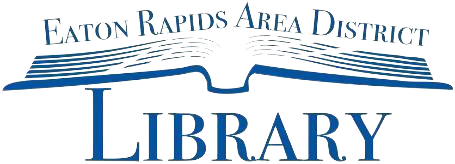
Our History
Prior to the public library’s establishment, there was a group of men known as the “literary society.” They understood the importance of books and having a gathering place to further their education, so they purchased bookcases.
Our Beginning
With that investment, the community’s first public library was established on February 28, 1876, thus cementing its place as one of the ten oldest public libraries in the State of Michigan.
28 February 1876
Eaton Rapids, MI
New Boundaries
Since its beginning, the community has welcomed all the public library offers. It extended past the City boundary lines in 1969 to serve Eaton Rapids and Hamlin Township.
1969
EATON RAPIDS PUBLIC LIBRARY TO CHARGE FEES TO NON-RESIDENTS
Beginning July 1, 2002, individuals who live outside of the City of Eaton Rapids and who do not pay City property taxes will be charged an annual fee for obtaining an Eaton Rapids Public Library card. The fees will be as follows: $5 for a temporary 90-day card; one per year. $25 per year for an individual card. $45 per year for family cards. The Eaton Rapids Public Library receives almost all of its funding from appropriated City taxes, yet 60% of library card holders presently live outside the City. A Library fee system was adopted by the Eaton Rapids Library Board and the City Council as a fair way for library patrons to share responsibil ity for the cost of operating the Library. The Eaton Rapids Public Library Board welcomes and encourages everyone to continue to make full use of all the resources available within the building. The staff will be happy to be of assistance.
01 July 2002
Changing Tides
In 2015, under new leadership, the library restored its relationship with the township, and we began to serve both townships again.
2015
Saving The Building
We pursued a building renovation to preserve our historic downtown library, which has served the community for generations. This renovation will not only save a cherished landmark but also ensure the library continues to meet the evolving needs of our patrons. By investing in this renovation, we are able to preserve the building’s unique character while making necessary updates to create a modern, accessible space for all. Sadly, this bond was not voted in.
